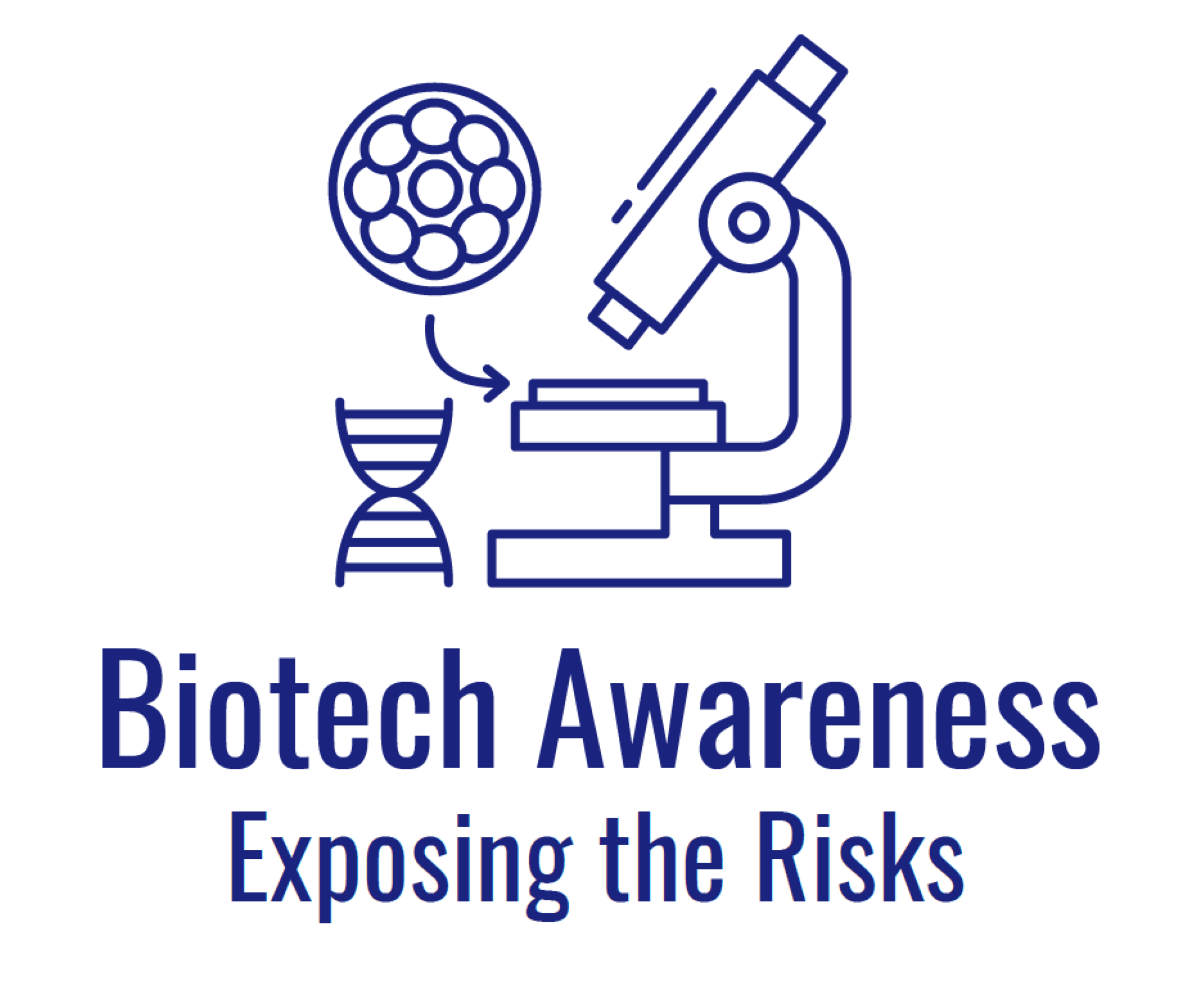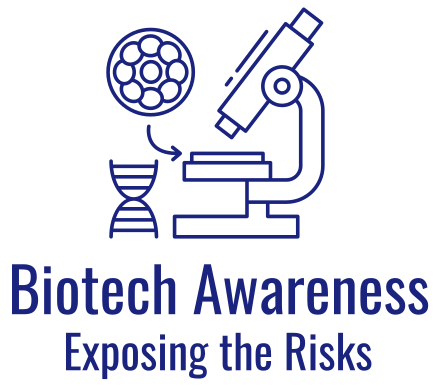Dr Anne Vidaver
Dr. Anne K. Vidaver gave a presentation titled "Cross-infective Microbes: From Plants to Humans" during the 2006 workshop on "Microbial Biopesticides and Transgenic Insecticides -- Enhancing Regulatory Communication" in Washington, D.C. at the University of California Center on Regulatory Communication.
Watch the video of Dr. Vidaver's presentation
The workshop was sponsored by the University of California - Riverside, the United States Department of Agriculture (USDA) and the Environmental Protection Agency (EPA).
Dr. Vidaver gave her presentation to representatives from numerous federal and state agencies and universities.
It was more than evident she was desperately trying to get everyone to pay attention to the human health hazards of exposure to plant pathogens and to realize that many of these plant pathogens are being used as biocontrol products.
Here is the abstract of Dr. Vidaver's presentation:
Microorganisms that infect and cause disease in both plants and people are uncommon but increasing in frequency of isolation. These cross-infective microorganisms are more insidious than those simply transmitted to humans by contact or consumption of plants. Currently 22 bacterial taxa and 38 fungal taxa have been reported as causing ‘phytoses’. Several examples of bacterial and fungal diseases of plants and corresponding human disease will be presented.
Questions that arise include accuracy of systematics analyses, role and similarity of virulence factors, genomic and pathogenicity islands and antimicrobial resistance. Newer biological techniques such as synthetic biology, illustrated by the construction of new viruses and DNA shuffling or intragenomic reconstruction, complicate oversight and regulatory action.
Regulatory challenges among presumed equivalent taxa among plant and medical communities include definition and assessment of risk groups, permitting for interstate transport and differential perspective on the use and formulation of regulatory agency guidance documents. Assessment of alternatives for microbial pesticide niche markets will be presented. Potential interagency programs on cross-over pathogens will be discussed.
The major challenge for agencies with regulatory responsibility for microbial biopesticides is the assessment and accuracy of taxa and scope of both natural and modified biological variations that may be used and their genomic stability.
Management of cross-infective diseases of both plants and animals will require more interdisciplinary research and cooperative agency interactions.
To read the entire transcript including the questions and answers that followed her presentation, click here.
To read some of the specific warnings that she mentioned during her presentation, click
here.
Dr Anne Vidaver's background
Anne K. Vidaver received her B.A. degree in biology at Russell Sage College in Troy, New York, and her M.S. and Ph.D. degrees in bacteriology at Indiana University in Bloomington, Indiana.
She joined the Department of Plant Pathology at the University of Nebraska in 1966 and was the head of that department for more than 30 years before retiring in 2010.
As important as her impact in teaching, research and administrative leadership are Dr. Vidaver’s contributions to plant pathology as a spokesperson and policymaker.
She represented the American Phytopathological Society (APS) and the American Society for Microbiology (ASM) before congressional committees and served on important government policy boards. She was an important source of credible information for key government policymakers.
Dr. Vidaver made outstanding contributions in both research and teaching, served as an effective administrator at her university and conducted her professional service activities with dedication and compassion.
The following statements are excerpts from Dr. Vidaver's presentation. To read the entire transcript including the questions and answers that followed her presentation, click here.
To read some of the specific warnings that she mentioned during her presentation, click here.
- So, you might want to know why we have this topic for this workshop. Well, because there are some organisms that are used as microbial pesticides or prospective microbial pesticides, and in my experience, plant pathologists don't know about some of these microbes and the medical community conversely does not. And it's unfortunate that with all the people -- regulatory agencies -- we're missing a few internationally. Hopefully they can learn from what I plan to say. Mainly, the Food and Drug Administration nationally needs help.
- I'm going to talk about some illustrations of plants and plant/human cross infections and use those as examples. Then I'll talk about what this actually could mean -- both to the scientific community and to the regulated community and challenges for regulators as well.
- More and more bacteria, by the way, are being reported to be the cause of some chronic diseases.
- The prospective virtue of fungi, which I'll talk more about later, is that in some ways they are more desirable as microbial control agents, but I'll say more about why that is.
- Now, the majority of the diseases that I'm going to talk about in humans are rare, but there will be a few that are not so rare. I'll try to point those out when we come to those. And, obviously, for anybody in the regulatory arena, this causes at least a plausible thought, but I'll indicate what some of the challenges are with this.
- Okay, so first of all, what am I talking about? The terms are not yet agreed upon as to what this means. You can talk about organisms that are cross-infective -- mainly go to from plants to humans. You can also call them cross-over pathogens, and you can also call them cross- or inter-kingdom pathogens. Dr. Tauxe from the CDC invented the term, as far as I know. Phytoses to force on with zoonoses. That is, organisms that go from animals to people. What they are not, is they're not overlapped pathogens in the select agent list with the FDA and AMA.
- One place I think that there's something missing, and it is not perhaps straight forward to talk about, is that we could have an interdisciplinary program across agencies. There are certainly interagency programs already in many areas, but we do not have any, as far as I know, that incorporate USDA and NIH...certainly in this area of cross-infective microorganisms.
- I dare say the medical community has no idea that some of these are really a problem in plants, and the plant community has no idea that these are problems in medicine.
- Actually, the question really for the medical community and even for the plant community is, are we talking about the same organism? In many cases, that's still very much the question.
- How we do this is still a very fluid field, and this is good, but it's a very challenging area for anyone who is in the regulatory arena.
- This is also true in terms of nanoclature. What are you going to name an organism? How are you going to identify it, and then how are you going to characterize any group of individuals...by rank?
- Homology. Well, some microbial geneticists believe that this is, again, inappropriate maybe with what we know, but no one has yet come up with something that is actually being received well as an alternative, so this is still a challenge.
- What is the species? And I'm not sure even for the fungi that there is agreement on what is the species, and I don't know about some of the other organisms as well.
- And then for defining a strain that you would actually use and that you would worry about stability, we're talking about the descendants of a single isolation -- your culture.
- Then there's the question of what do you do about the host responses. How do you measure the population of plants or people or animals as the case may be, because we are not in a scattered population in any of those categories.
- We need to know a lot more about induced and innate immunity, simply to be able to combat all these challenging organisms that are multiplying and changing at a faster rate than we are.
- A DNA shuffling is going on that is the rearrangement of genomes and how will this be actually seen by regulatory agencies is not clear. It could be that may come out in this workshop.
- Our model system analysis -- it can all be complex depending on what you're looking at. Many people are on both sides of the fence, but in any case this is a challenge -- both for the regulated community and the regulatory system.
SPREAD THE WORD. RAISE AWARENESS ABOUT RISKS IN THE BIOTECH INDUSTRY.
FAIR USE NOTICE: This site may contain copyrighted material the use of which has not always been specifically authorized by the copyright owner. We are making such material available in our efforts to advance the understanding of environmental, political, human rights, economic, democracy, scientific and social justice issues. We believe this constitutes a 'fair use' of any such copyrighted material as provided for in section 107 of the US Copyright Law. In accordance with Title 17 U.S.C. Section 107, the material on this site is distributed without profit to those who have expressed a prior interest in receiving the included information for research and educational purposes.


